Vanda Orchid: care and cultivation at home
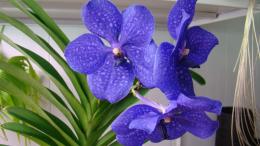
Blooming orchids are so beautiful and amazing that it is difficult to find a person who remains indifferent to their beauty. Each species or variety is beautiful in its own way.
This also applies to plants from the genus Vanda, which includes more than five dozen species, not counting the various hybrids. Let's try to find out what the Vanda orchid is and how to care for it at home.
Content:
- Vanda Orchid
- Planting Vanda orchid at home
- Conditions for growing Vanda orchid
- Features of caring for Vanda
Vanda Orchid
Under the name Vanda, several plants popular in home floriculture are combined. Wild orchids of this species grow in the green, warm forests of Australia, Indonesia, southern China, and India. They all have similar characteristics. First of all, orchids from this species are characterized by long, hanging aerial roots.
In appearance they look like a beard of light green or gray-green color. In the wild, these roots hang intricately from tree trunks and branches. The stem is rounded, with narrow, belt-like leaves arranged in two rows. Sometimes the leaf plates may resemble narrow rollers in shape.
These orchids are classified as the terete type. They are closer to plants - succulents. For home breeding, plants of the first type are preferable, since orchids of the second type are more capricious.
The flowers of orchid species in the genus Vanda come in a wide variety of sizes and colors.They can be collected in inflorescences of three to five flowers or be multi-flowered. Their colors are varied. The most famous is Vanda corulea. This species, having blue flowers, has become the main one for obtaining numerous hybrid forms.
When Wanda hybridizes with others orchids receive forms that are quite adapted to home conditions. Many orchid lovers consider Vanda one of the most finicky in home floriculture. However, if you have the desire and some knowledge about this type of orchid, you can still grow them.
Planting Vanda orchid at home
Choosing a Vanda orchid seedling
Success in growing any plant begins with the correct choice of planting material. To plant a flower at home, you will have to go to a specialized store. When choosing a plant, you need to know that each orchid must have a tag with the name and basic information about the plant and its producers.
For growing At home, it is better to choose an orchid that has been grown in the local climate for at least two years. Flowers freshly imported from tropical countries, such as Thailand, do not tolerate acclimatization very well. Even an experienced gardener finds it difficult to cope with such an orchid.
The absence of leaves in the lower part of the stem is acceptable for this species, but if more than half of the stem is bare, it is better not to buy the plant. Adaptation of such an instance is fraught with various difficulties. The roots can be very modest in size; what is more important is their even color and the absence of rot.
If the leaves are wrinkled and folded in half, then it is also better not to take such a flower. Sheet plates should be smooth and elastic.To successfully grow Vanda, she needs to choose the right place and create a certain microclimate.
Conditions for growing Vanda orchid
Temperature, watering and lighting
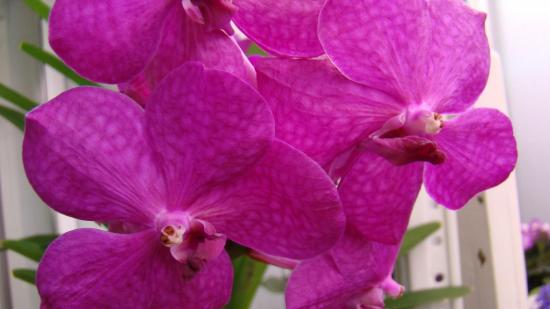
For Wanda, the usual room temperature of + 20 + 22 is quite suitable. In the summer, provided that neither at night nor during the day the temperature does not drop below + 16 + 18 degrees, it is best to move the orchid to a balcony or loggia. To cause the Vanda orchid to bloom, it is desirable that the difference between day and night temperatures be about 8 degrees.
Vanda is demanding of light, but does not react well to direct sunlight. Optimal lighting - this is diffused light. From late September to mid-March, in temperate climates, the flower needs additional light.
Vanda will not grow in a room with dry air. It is advisable to have a special humidifier or systematically spray water in the room with the orchid. Wanda's roots are responsive to a warm, long shower.
Substrate for Vanda orchid
The best way to grow this type of orchid is the complete absence of any substrate. Vanda develops best with bare, free roots. To do this, it is placed in special baskets or flowerpots made of natural branches. Some gardeners practice growing Vanda in pieces of tree bark.
Video about proper care for this type of orchid:
Features of caring for Vanda
For Wanda, abundant watering of the roots is of great importance. To do this, they need to be immersed in warm water for 10 - 20 minutes. The roots of the plant respond very well to a long shower with good water pressure. This may be due to the fact that tropical downpours occur very often in the plant’s natural habitats.
You need to shower for 15 minutes to half an hour. When moistening the roots, it is important to avoid getting water on the leaves, flowers and stems. It is advisable to arrange such a shower once every three to four days in sunny weather and once every 6-7 days in cloudy weather.
From autumn to spring, watering may be less frequent, but taking into account the heating operation, the air must be humidified. If roots Vandas are sprinkled with bark, so the bark should be moistened once every 5-6 days in the summer and once every 12-14 days in the winter. In addition to watering, this type of orchid needs regular feeding.
Young plants are fed by immersing the roots in a solution of complex mineral fertilizer once every 15 days; an adult orchid is fed once every 30 days. To feed, dissolve 15 g of fertilizer in 10 liters of water. The lack of minerals will be indicated by the scant flowering of Vanda.
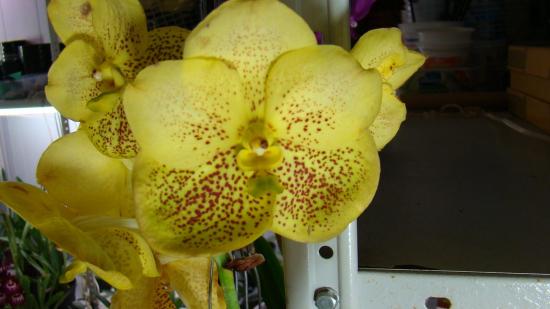
It is important to avoid overheating the plant; with prolonged heat above 30 degrees, the plant may die. A dangerous pest for the Vanda orchid is the spider mite. It is important to observe quarantine for new plants and at the first sign of mite damage to the orchid, wash the leaves with soap.
All care for the Vanda orchid is as follows:
- arrangement of good diffused lighting
- sufficient watering
- systematic mineral supplements
- prevention of pest infestation
- keeping roots healthy
If everything is done correctly, then Wanda will delight you with her beautiful flowers up to three times a year.

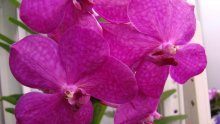
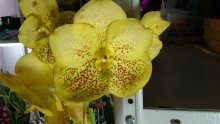
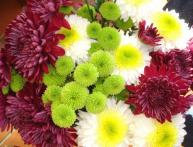

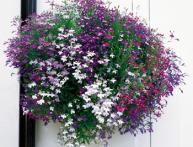
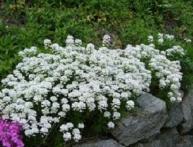

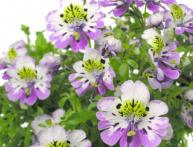
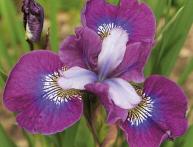
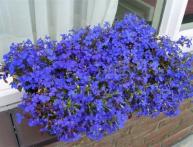
Comments
We have an orchid growing in a plastic pot, in tree bark, with holes on the sides. True, we rarely water the flower and practically do not feed it. It will be necessary to change the care of the orchid so that it does not disappear.